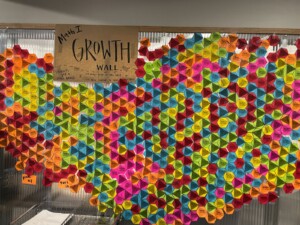Next Gen Higher Ed: Blended, Personalized & Competency-based

New higher education options are bringing fast, flexible solutions for adults balancing work and family obligations. And it’s just in time because young adult unemployment remains stubbornly high, but thoughts of going back to school to finish up a degree can be daunting.
An increasing percentage of adults need to work while learning — and keep learning to keep working. Fortunately, the postsecondary landscape changing fast. Learning opportunities are becoming more flexible and engaging, more tailored to individual learners, and better linked to employment opportunities.
Demand is growing for postsecondary options that are:
- Blended: combining online and face-to-face learning options to optimize achievement and flexibility;
- Personalized: flexible pathways focused on real jobs with online and evening classes, digital resources, and real-time support for working adults;
- Flexible: continuous enrollment that starts when the learner is ready, along with self-paced options;
- Affordable: recognize prior credits/learning, potential for rapid progress, and inexpensive credits;
- Relevant: not a random series of theory courses but courses of study mapped to the competencies required for high demand jobs;
- Compelling: experienced instructors with real-world experience;
- Motivating: engaging experiences including team-based projects and real dialogue; and
- Updated: a modern web and mobile, fully social user experience.
Around the edges, you can see a couple of new trends emerging. One is earlier versions of these design elements in early college high schools — many focused on particular career and technical pathways — that create the opportunity for students to graduate with up to two years of college credit and job certificates.
Given the importance of internships, there is a slow trend (bucking traditional accreditation practices) to include more credits from work-based learning, particularly in technical fields. This direction will be strengthened by mobile and modular learning opportunities and as the field’s ability to measure discrete competencies improves. This will also enable more personalized options including interest-driven projects.
Leading professional schools are pioneering lifelong learning relationships by powering alumni learning plans — leading to 40-year rather than a 4-year relationships with a university.
While traditional higher education suffers from declining returns, a new generation of postsecondary options are creating affordable pathways to good jobs.
This post was written as part of the University Of Phoenix Versus Program. I’m a compensated contributor, but the thoughts and ideas are my own.




0 Comments
Leave a Comment
Your email address will not be published. All fields are required.